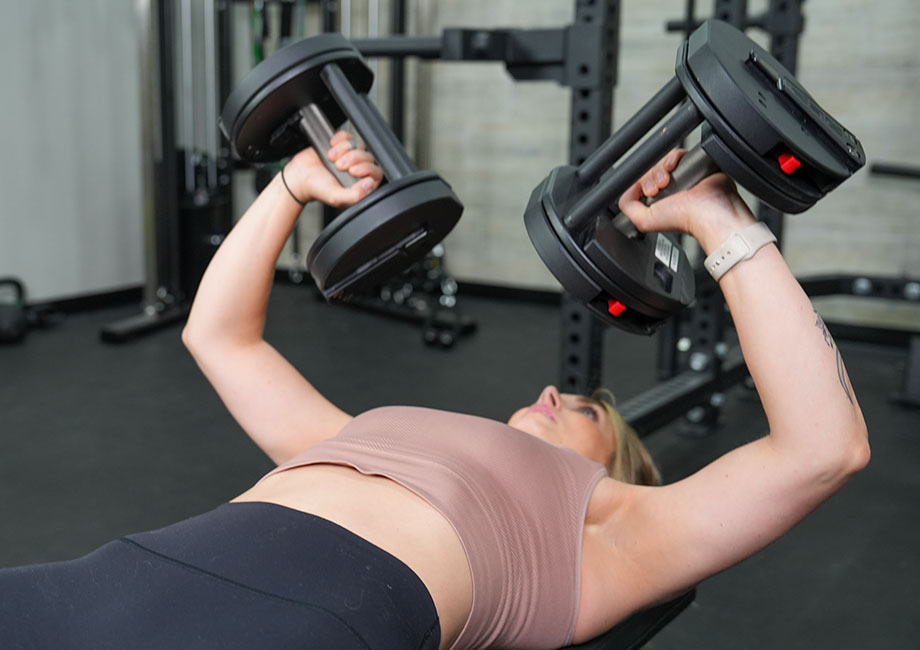We test and review fitness products based on an independent, multi-point methodology. If you use our links to purchase something, we may earn a commission. Read our disclosures.
Sculpted triceps are more than just a reflection of a well-developed physique. They also play a pivotal role in movements requiring elbow extension, such as the bench press, the shoulder press, and dips. To put yourself on a path to bigger, stronger triceps and superior pressing power, you can rely on an exercise popularized by one of the biggest powerlifting legends of all time: the Tate press.
RELATED: Powerlifting Workout
Named after decorated strength training coach and EliteFTS founder Dave Tate, this exercise exclusively targets the three-headed muscle that can make all the difference in hitting a PR on the bench or looking menacing in a tank top.
From step-by-step instructions to mistakes to avoid, I’ve got you covered with expert Tate press tips honed through years of experience as a certified personal trainer and rugby player. Let’s get your triceps ready for battle.
How To Do the Tate Press
You will need a weight bench and a pair of dumbbells or adjustable dumbbells to perform the Tate press. You can use a flat bench or incline bench, depending on your preference. Keep your chest and shoulders out of the movement by focusing solely on elbow flexion and extension to isolate your triceps.
How to do it:
- Lie on a flat bench with a dumbbell in each hand held directly above your chest. Your palms should face forward with your elbows pointed outward and your thumbs next to one another.
- Bend your elbows to lower the dumbbells toward your chest while keeping your palms facing away from you.
- Touch the dumbbells to your chest, then extend your elbows and squeeze your triceps at the top.
- Lower the dumbbells back down and repeat for the desired number of reps.
RELATED: Best Dumbbells
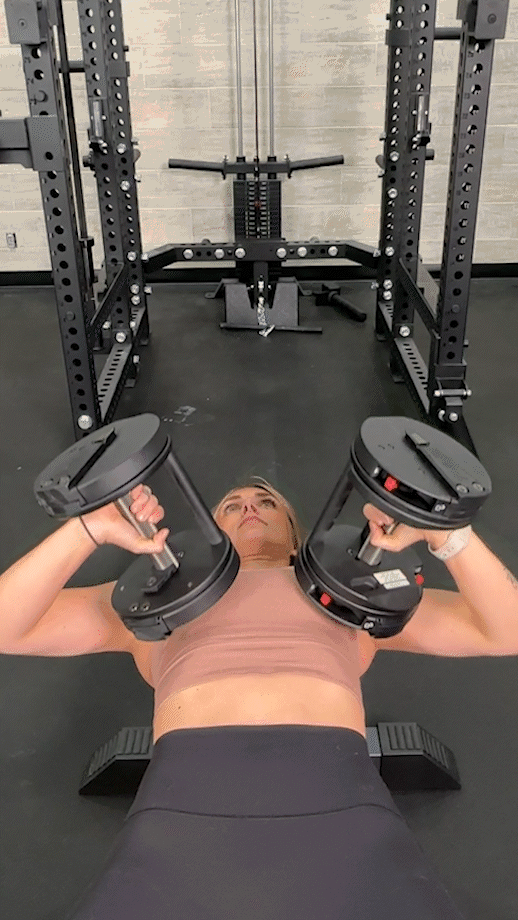
Modifications
- Dial it back: If you aren’t ready for the Tate press, focus on the traditional dumbbell bench press and triceps pushdowns. While the former will help you grow comfortable with the correct body position and general movement pattern, the latter will help you develop stronger triceps for executing the Tate press.
- Make it harder: Incorporate tempo variations by slowing down the eccentric (lowering) phase or adding pauses at the bottom of the movement to increase time under tension and maximize muscle engagement. To take things to the next level, try the JM press—a combination of a close-grip bench press and a skull crusher made famous by powerlifting legend JM Blakely. This challenging triceps exercise also engages other muscle groups, including your pecs (chest) and delts (shoulders).
RELATED: How and Why To Do Tempo Training
Tate Press Variations
- Incline Tate press: You can perform the Tate press on an incline bench, which increases the stretch on your triceps and targets the muscle from a different angle.
- Single-arm Tate press: Instead of using both dumbbells simultaneously, perform the Tate press with one arm at a time. This unilateral exercise can help correct muscle imbalances.
- Banded Tate press: Secure a resistance band around a sturdy object on the floor or underneath the bench and perform the exercise by holding onto the ends of the band. The resistance band provides constant tension throughout the movement, making this a versatile variation if you want to train your triceps without using dumbbells.
Tate Press Alternatives
The Tate press is just the tip of the iceberg when training your triceps. Here are some other exercises that effectively target this muscle from different angles and with varying resistance levels.
Cable Overhead Triceps Extensions
Why do it: Overhead triceps extensions can effectively isolate the long head of the triceps, which is important for overall arm development. A 2023 study1 found that performing cable elbow extension training in the overhead position led to greater muscle hypertrophy (aka growth) than training in a neutral-arm position where your elbow is at a 90-degree angle.
How to do it:
- Attach a rope or straight bar to the pulley of a cable machine set to about the height of your abs.
- Grab the bar (or rope), twist your torso so you’re facing away from the machine, and stagger your feet slightly to maintain balance. Your hands should be about shoulder-width apart with your elbows bent at a 90-degree angle.
- Extend your arms fully overhead by straightening your elbows.
- Squeeze your triceps at the top of the movement.
- Lower the rope back to the starting position and repeat for the desired number of reps.
RELATED: Triceps Extensions Variations
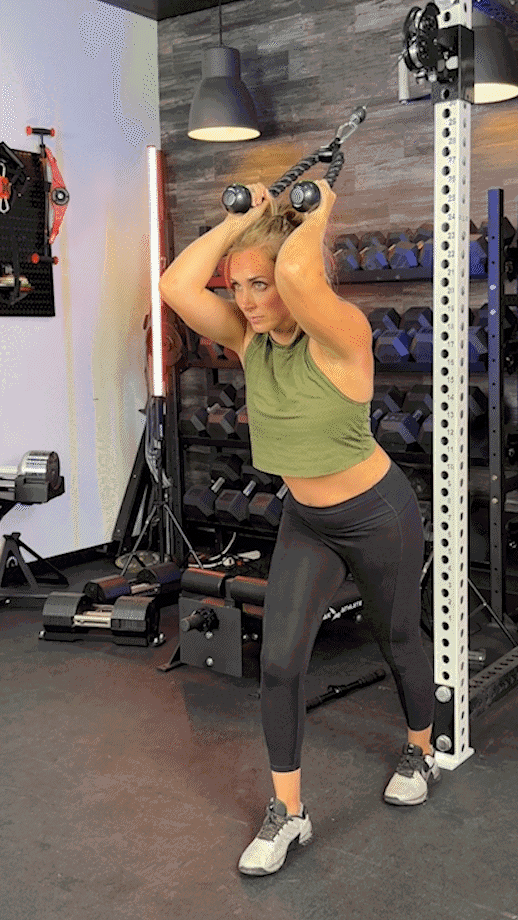
Close-Grip Bench Press
Why do it: The close-grip bench press targets your triceps more than the traditional bench press, making it an excellent choice for building triceps strength and size.
How to do it:
- Lie on a flat bench and grab the barbell with your hands closer than shoulder-width apart (between six to 12 inches).
- Retract your shoulders, squeeze your glutes, and anchor your feet to the floor.
- Unrack the bar and slowly start to lower it toward your chest, keeping your wrists neutral and elbows tucked close to your sides.
- Touch the bar to your chest, then extend your arms to return to the starting position.
- Repeat for the desired number of reps.
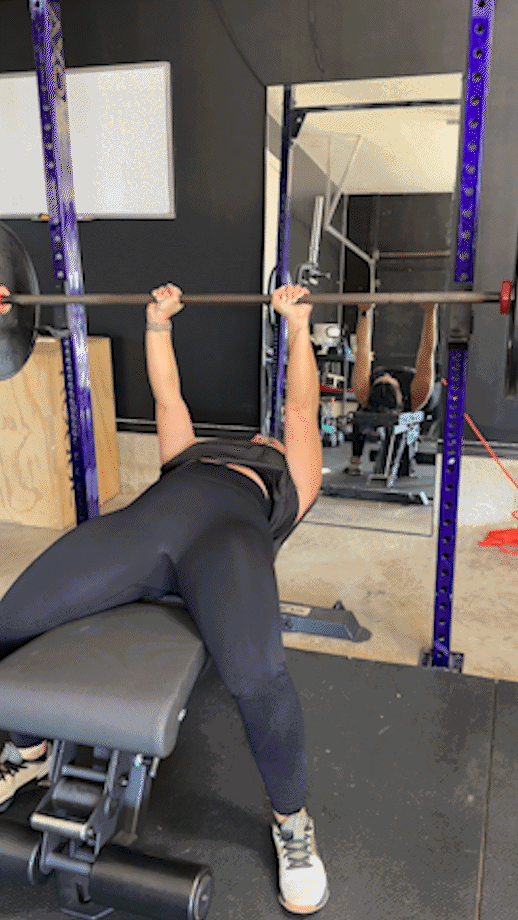
Triceps Dip
Why do it: Triceps dips are a versatile bodyweight exercise that effectively targets your triceps, shoulders, chest, and back. Whether performed on parallel bars, a chair, or a bench, triceps dips help increase upper-body strength and muscular endurance.
How to do it:
- Position yourself between parallel bars or use a sturdy surface like a chair or bench.
- Grip the bars or edge of the surface with your hands shoulder-width apart and palms facing down.
- Lower your body by bending your elbows until your upper arms are parallel to the ground.
- Push through your palms to straighten your arms, lifting your body back up to the starting position.
- Repeat for the desired number of reps.
RELATED: How to Do the Triceps Dips Exercise
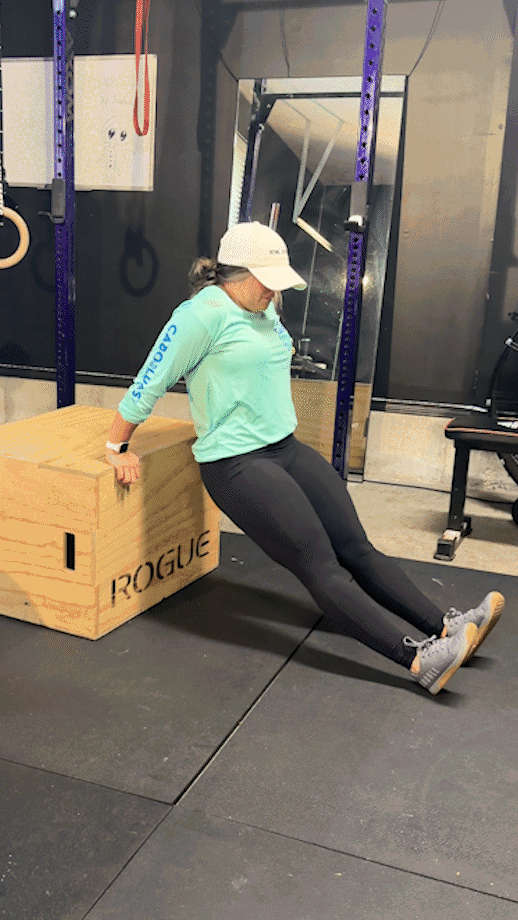
Skullcrushers
Why do it: Skullcrushers are an effective exercise for targeting the long head of the triceps. They allow for a deep stretch, and you can perform them using a barbell, a pair of dumbbells, a resistance band, or a cable machine.
How to do it:
- Lie on a flat bench with a barbell held straight above your chest and your arms fully extended.
- Lower the barbell toward your forehead by bending your elbows, keeping them in line with your shoulders.
- Stop when the barbell is just above your forehead or when you feel a deep stretch in your triceps.
- Press the barbell back up to the starting position by extending your elbows.
- Repeat for the desired number of reps, maintaining full control throughout the movement.
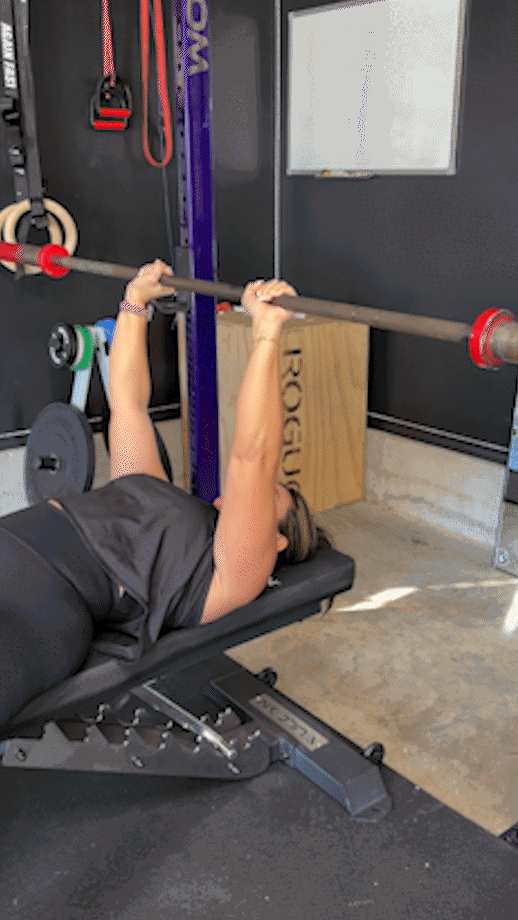
Benefits of the Tate Press
The Tate press is a powerful tool that can enhance your physique and performance. Several decades ago, decorated powerlifter Dave Tate began using this dumbbell triceps extension variation to improve his bench press performance without excessively loading his elbow joints and connective tissues.
Besides increasing muscle mass and strength, there are other benefits to incorporating this exercise into your upper-body routine.
Helps Increase Triceps Mass and Strength
Unlike push-ups, dips, or even the close-grip bench press, the Tate press isolates your triceps while mostly taking your other upper-body muscles out of the equation. It’s also a great movement for both hypertrophy and strength, as you can play with variables like tempo and load to get the results you’re looking for.
RELATED: 11 Best Supplements for Muscle Growth
May Reduce Stress on Your Elbows and Wrists
Unlike other triceps exercises that can place stress on the elbows and wrists, the Tate press allows for a more natural movement pattern, minimizing strain on these joints. By maintaining a neutral wrist position throughout the exercise, you’ll reduce the need for excessive elbow extension, helping prevent overuse injuries and discomfort commonly associated with other triceps exercises.
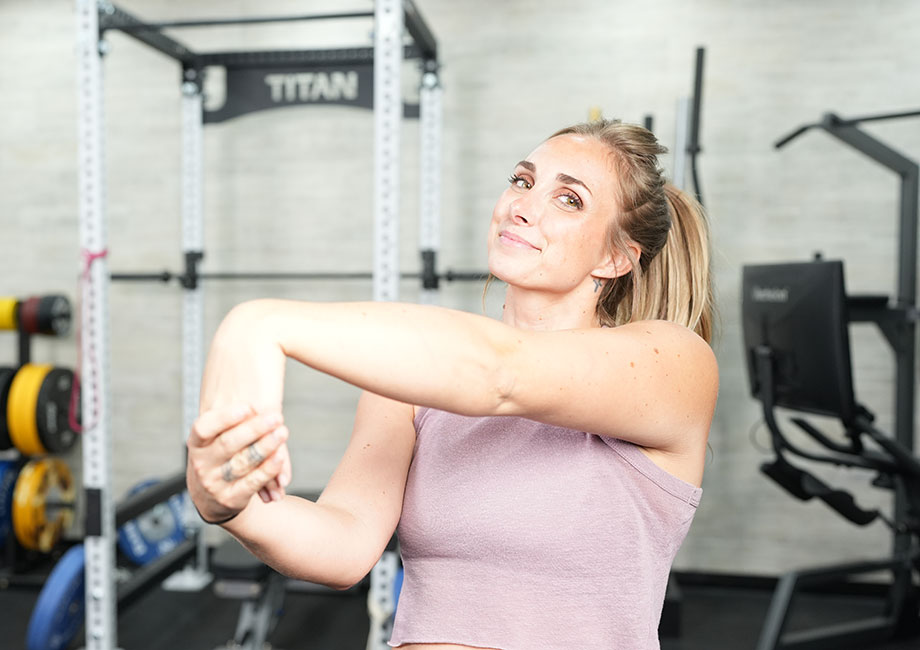
Helps Enhance Bench Press Performance
Incorporating the Tate press into your training routine may help improve your bench press performance. Strengthening the triceps—particularly the inner head targeted by the Tate press—provides a stronger lockout at the top of the bench press movement. This improved triceps strength and stability can help lifters overcome sticking points and achieve greater overall strength gains in the bench press, ultimately contributing to enhanced upper-body strength and muscle development.
RELATED: An Olympian Explains How To Increase Strength
Common Tate Press Mistakes
Mastering the Tate press can significantly benefit your triceps development, but several common mistakes can hinder your progress and even lead to injury. Here are a few areas of concern to keep in mind.
Excessive Elbow Movement
Allowing your elbows to flare out excessively during the eccentric (lowering) phase of the movement can shift the emphasis away from your triceps and onto your shoulders, potentially leading to strain or discomfort in your shoulder joint.
Lack of Wrist Stability
Another mistake I see with the Tate press is failing to maintain wrist stability. Allowing your wrists to bend or collapse can reduce the effectiveness of the exercise and increase your risk of injury. To avoid this, grip the dumbbells firmly and keep your wrists neutral, ensuring they remain strong and stable throughout the full range of motion.
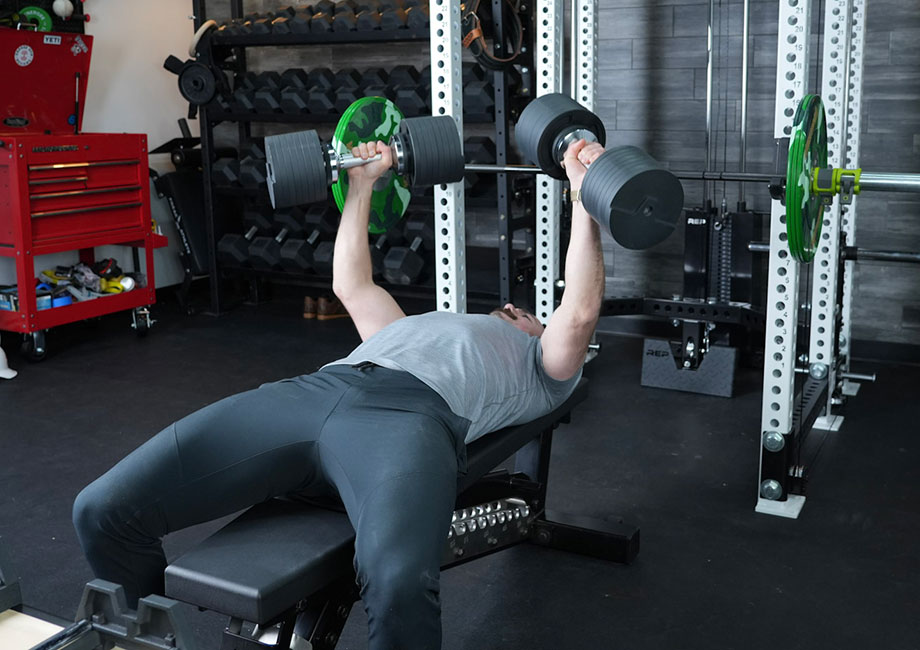
RELATED: Grip Strength Exercises
Using Too Much Weight
Going too heavy on the Tate press can be a recipe for disaster, as you’ll likely sacrifice proper form and increase the risk of injury to your elbows or shoulders. Focus on using a weight that allows you to move the dumbbells in a smooth, controlled motion for at least 8 to 12 reps, which is the ideal range for hypertrophy training2.
Muscles Worked by the Tate Press
The Tate press targets the triceps brachii—the horseshoe-shaped muscle on the back of your upper arm. In addition, your chest, shoulder, and forearm muscles play key supporting roles. While this exercise is fairly straightforward, understanding how each muscle factors into the movement can ensure you get the most muscle-building benefits.
- Triceps: The main muscle involved in the Tate press, your triceps are responsible for elbow extension. Compared to other pressing movements, this exercise effectively targets the long head, which attaches to the scapula.
- Pectoralis major/pectoralis minor: While not the main focus, your chest muscles act as stabilizers during the Tate press. They assist in controlling the movement of your arms and contribute to pressing the dumbbells back up to the starting position.
- Anterior deltoids: Your anterior deltoids are involved in the initial phase of the Tate press, helping to raise the dumbbells from the starting position and stabilize your shoulder joints throughout the movement.
- Forearms: Your forearm muscles, including the flexors and extensors, stabilize your wrists and prevent the dumbbells from slipping.
RELATED: 3 Dumbbell Triceps Workouts to Build Up Your Arms
Tate Press: Final Thoughts
Whether you’re striving for bigger arms, improved bench press performance, or overall upper-body strength, the Tate press is a valuable addition to any workout regimen. Remember to prioritize proper form and avoid overloading with excessive weight to keep your elbows, wrists, and shoulders out of harm’s way. While you don’t have to be a legendary powerlifter to enjoy its benefits, don’t be surprised when you start putting up bigger numbers on the bench once you’ve made it part of your routine.
Pulling (or pressing) it all together:
- Not only is the Tate press beneficial for triceps development, but it also can help you improve your lockout on the bench press.
- Excessive elbow movement and wrist instability can cause you to perform this exercise incorrectly, potentially leading to injury.
- Pairing the Tate press with classic bodybuilding movements like skull crushers and dips can open the door to stronger, more muscular triceps.
Tate Press: FAQs
What does a Tate press work?
The Tate press primarily works your triceps, specifically the (long) head of the muscle. In addition, your chest (pectoralis major and pectoralis minor), shoulders (anterior deltoids), and forearm muscles act as stabilizers and supporters during the movement.
Who invented the Tate press?
The Tate press is named after decorated powerlifter and strength coach Dave Tate, who started using this dumbbell triceps extension variation in the ’90s to improve his bench press.
RELATED: Larsen Press: Get a Next-Level Bench Press With This Tried-And-True Technique
How do I progress my Tate press?
As with any accessory exercise, you can progress your Tate press by adding more reps or sets to increase total volume. You can also increase the intensity by using heavier weights, changing the tempo, or incorporating drop sets or supersets.
Remember to progress gradually and listen to your body to avoid any setbacks.
References
- Maeo, S., Wu, Y., Huang, M., Sakurai, H., Kusagawa, Y., Sugiyama, T., Kanehisa, H., & Isaka, T. (2023). Triceps brachii hypertrophy is substantially greater after elbow extension training performed in the overhead versus neutral arm position. European journal of sport science, 23(7), 1240–1250. https://doi.org/10.1080/17461391.2022.2100279
- Schoenfeld, B. J., Grgic, J., Van Every, D. W., & Plotkin, D. L. (2021). Loading Recommendations for Muscle Strength, Hypertrophy, and Local Endurance: A Re-Examination of the Repetition Continuum. Sports, 9(2). https://doi.org/10.3390/sports9020032
Further reading

In this Torokhtiy Weightlifting Program review, we have an Olympian try out this Olympian-made program. Read on to see if the program met our expectations. Read more

Ready to get fit? Try our heart-pumping HIIT cardio workouts at home. Read more

Sculpted triceps are more than just a reflection of a well-developed physique. They also play a pivotal role in movements requiring elbow extension, such as the bench press, the shoulder press, and dips. To put yourself on a path to bigger, stronger triceps and superior pressing power, you can rely on an exercise popularized by one of the biggest powerlifting legends of all time: the Tate press.RELATED: Powerlifting Workout » Read more about: Tate Press: How To Take Your Triceps to the Next Level » Read more

Looking for a stationary rower? In this Sole SR550 review, find out what our tester thought of Sole’s latest rowing machine! Read more

